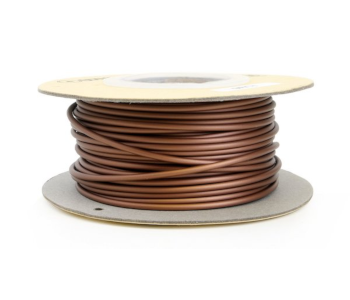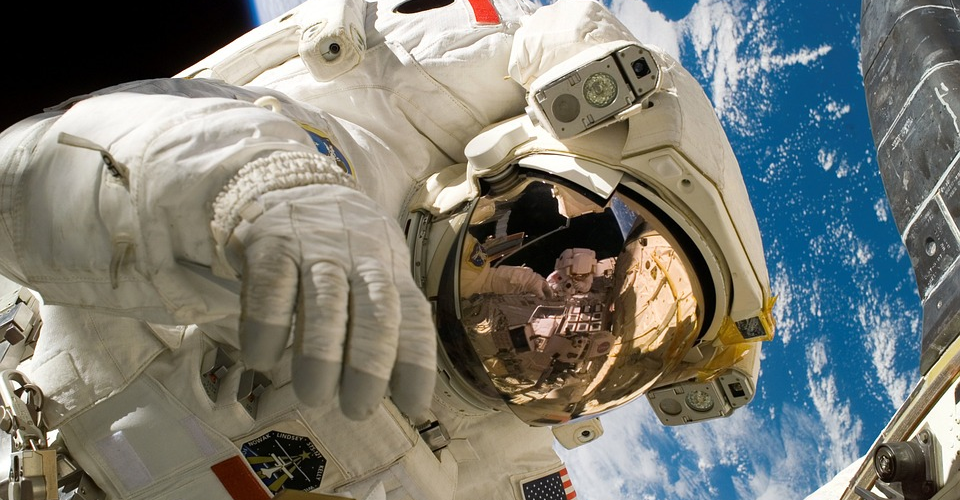3D Printing in Space: The Next Frontier
3D printing in space enables the future of human space travel and interplanetary colonization. It already plays a crucial role in making the production of low-cost satellites and lighter possible. Moreover, it can be one of the critical elements that will help the commercial space industry grow into maturity. The idea of building facilities and other settlements becomes conceivable, even without having to take expensive and bulky prefabricated materials from Earth.
Challenges of Long Duration Space Flight

Sending tons of spare parts for future missions to the Moon and Mars is not practical. You cannot send 7,000 pounds of spare parts to the station annually, store another 29,000 pounds of spaceflight hardware spares aboard the station, and keep another 39,000 on standby, ready to fly if needed. This only works for spacecraft orbiting 250 miles above the planet.
Astronauts should be able to craft their own space parts, tools, and other essentials during long voyages. In-Space Manufacturing or ISM using 3D technology could help accommodate their routine needs, as well as their unforeseen requirements. It could be the answer to help them adapt quickly.
At NASA Marshall Space Flight Center (MSFC), the ISM project sent the first 3D printer to the space station in 2014. It used a fused filament fabrication (FFF) process that feeds a continuous plastic thread onto a tray through a heated extruder. The 3D printing in the Zero-G investigation revealed that microgravity does not affect the operation, paving the way to new logistic systems for long-duration space flight.
Another challenge is the on-orbit inspection of parts made in space. The piece made should be able to meet the requirements for its intended use. But, ultimately, the ISM project allows space missions to be independent of Earth. It makes in-space manufacturing possible and frees up all the space initially used to store spare parts.
Creating Spare Parts from Scratch
3D printing enables you to store spare parts virtually and produce them at the point of need. The digital inventory frees up space in a warehouse and makes the production and replacement of components easier. When a particular piece is needed, you can find it in your inventory and send the design to a 3D printer. Then, you can have it ready in a few hours.
Digital manufacturing technology also decreases storage costs and improves service. With fewer fixed costs, it proves that 3D printing is more cost-effective for low-volume production.
How Is It Different then Printing on Earth
3D printing in space is not so different from 3D printing on Earth. The end goal is the same – build things in real-time to meet users’ needs. The main difference is, in space, there is no gravity to keep things in place. You would have to rely on other forces. There is also no natural convection like air currents to help with cooling. Thermal control in the 3D printing system is necessary to keep the hot parts hot and the cool ones cool.
Is There a 3D Printing in Space That’s Working?
Yes. Currently, the 3D printing machine in space is about the size of a microwave. But, the size of the printer depends on the amount of space available and the object to be printed. Some printers can make structures bigger than themselves. Some can even operate outside the International Space Station in the vacuum of space.
Objects Printed in Space

3D printers in space had made various kinds of stuff, such as ratchets that tweak things down, radiation covers for different experiments, and student-designed artworks. Currently, there are three materials in the space station. One is the acrylonitrile butadiene styrene (ABS), a typical 3D printing material used on Earth. The other is the high-density polyethylene (HDPE), which is a food-safe plastic and more flexible than the ABS.
Finally, the Polyetherimide/Polycarbonate (PEI/PC) is an aerospace-grade polymer that produces more robust, more heat-resistant materials. This material can hold strength in a vacuum and low-temperature environment in space.
The first object 3D printed in space is a ratchet wrench. In 2014, Commander Barry Wilmore needed one but cannot go back home. So, he called Mike Chen at Made in Space, who typed up some lines of code in his office and beamed them back to the space station. The 3D printed promptly made a copy.
Can You Print Metal Parts in Space?
Of course. 3D printers can manufacture metal parts in space. Some companies here on Earth are already using it to build components for everything. It will not be long for cosmic applications to gain traction.
The drive to fabricate metal parts in space comes from innovators like Elon Musk and Jeff Bezos. They intend to make extraterrestrial travel less expensive by fueling an emerging economy to service the industry. The Made in Space company aims to fashion ready-to-use aluminum products, as well as steel and titanium.
Printing metal parts makes sense due to the challenges of sending people and materials into space. Currently, the 3D printers in space are operated from the ground. Print orders are shipped digitally. The crew is only involved in removing the parts from the print bed when printing is complete.
What’s Next for 3D Printing in Space
We live in the age in which we either innovate or vanish. The 3D scene is becoming more competitive than ever. But, without a doubt, this is an exciting time for 3D printing. The industry continues to move towards automation, and 3D technology is increasingly becoming part of a more comprehensive manufacturing system.
- Metal 3D printing will continue to mature. Metal 3D printing remains one of the fastest-growing segments of 3D technology, and we have just scratched its surface. Its real potential is yet to be completely realized. Soon, we will be able to validate parts for quality control to ensure a broader, faster, and more reliable process.
- Enhanced material innovation. In the imminent future, there is no hesitation that the pace of material innovation will accelerate. As the market matures, manufacturers will continue to push OEMs for new materials to cater to applications never before thought possible.
- Building of spacecraft. Like airplanes, spacecraft require highly specialized components. 3D printing is going to bring the cost of manufacturing the parts down and make innovations possible. It will also grant you high adaptability to unexpected circumstances, exactly what you need in remote places in the solar system.
- Increased production for aerospace printed parts. 3D printing innovations and collaborations will continue to drive the industry. More output for aerospace will generate solutions to issues that are otherwise unattainable without Additive Manufacturing. These solutions will be high volume, large scale, and large parts as the industry demands more.
- Major transformative force. At the end of the decade, 3D printing will define and transform the habitat and mobility on Earth and space. NASA is already using a 3D printer to develop and test a space rover. They will produce more complex geometries, paving the way for the fast reproduction of existing parts and redesigning new solutions.
Final Thoughts
3D printing is giving us an endless set of possibilities for products manufactured in space. The way things are going is pretty impressive. It paved the way for new logistics systems, making long-duration space flight more comfortable. Astronauts no longer have to carry tons and tons of spare parts because in-space manufacturing frees up storage. They can also create spare parts from scratch at the point of need. Plus, they are ready in just a few hours.
Currently, 3D printers in space are operated from the ground. Shortly, we expect groundbreaking advances that will make the technology a major transformative force on the solar system. As the industry continues to move towards automation, manufacturers will be able to print using different types of materials, decreasing costs and cutting lead times.



The concept of 3D printing in space has received extensive attention in industry circles in recent months. NASA plans to send a 3D printer produced by California-based company Made in Space to the space station this year, and the European Space Agency has mused about using 3D parts to build lunar bases. Despite those plans, a recent National Research Council report said the technology is still in its infancy and that the materials science behind manufacturing in space is poorly understood.